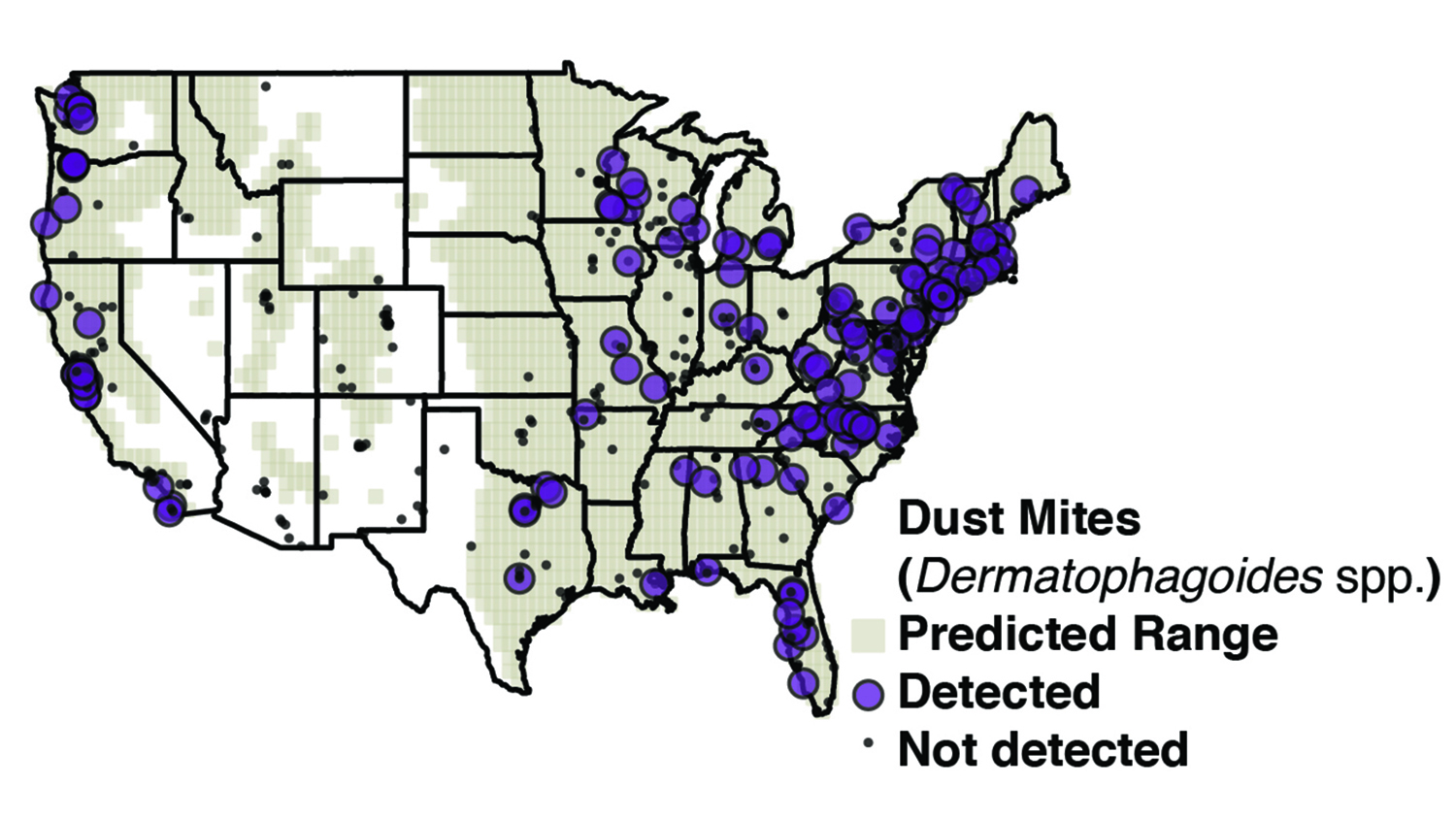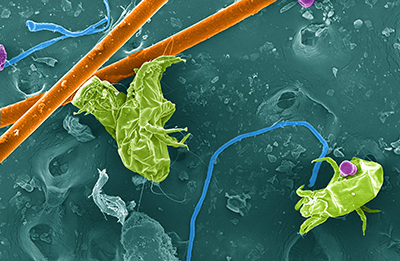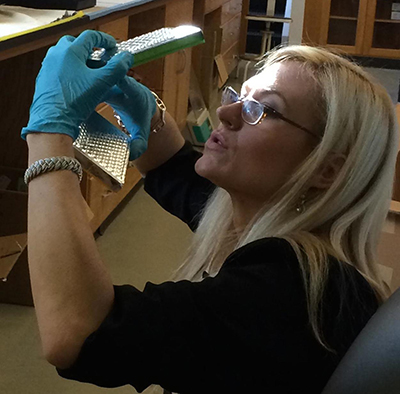Study Highlights Diversity of Arthropods Found in Homes Across the United States – From Swabs of Dust

Researchers from North Carolina State University and the University of Colorado Boulder used DNA testing and citizen science to create an “atlas” that shows the range and diversity of arthropods found in homes across the continental United States.

“Previous research found a significant diversity of arthropods in homes in one part of North Carolina – we wanted to use advanced DNA sequencing-based approaches to get a snapshot of arthropod diversity in homes across the country,” says Anne Madden, a postdoctoral researcher at NC State and lead author of a paper on the new work. “This work is a significant step toward understanding the ecology of our own homes, with the goal of improving our understanding of how those organisms in our homes may affect our health and quality of life.”
To collect nationwide data, the researchers recruited more than 700 households across all 48 states in the continental United States. Study participants swabbed dust from the top of a doorway inside their house or apartment. The swab was then sealed and sent to the research team, which used high-throughput DNA analysis to identify every genus of arthropod DNA found in the dust samples.
“We found more than 600 genera of arthropods represented inside people’s homes – not including food species, such as crabs and shrimp, which also showed up,” Madden says. “That’s an incredible range of diversity from just a tiny swab of house dust.”
After analyzing the data, researchers identified several variables that were associated with greater arthropod diversity: having cats or dogs in the home; having a home in a rural area; or having a home with a basement.
“Greater diversity does not necessarily mean greater abundance,” Madden says. “We’re talking about more types of arthropods, not necessarily larger populations of arthropods.”

These findings expand on previous work that found pet ownership also increased the biodiversity of microbial organisms, such as bacteria and fungi.
“We were surprised to see that these three variables – which we have some control over – were more powerful predictors of biodiversity than climate,” Madden says. “We had expected environmental factors associated with regional climate to play a larger role than they actually did.”
However, the scope of the study data also allowed the researchers to create a national atlas they can use to track the range of specific arthropod genera. And, depending on the genus, climate factors were seen to play a significant role in determining the range of some arthropods.
For example, dust mites can be serious allergens in homes and the team found that they were more often associated with homes in humid regions of the country.
In addition, researchers were able to use the atlas to identify genera that had significantly expanded their range – but no one had previously noticed.
For example, the Turkestan cockroach (Shelfordella lateralis) was previously thought to be found only in the southern and western regions of the United States – but the data from this study showed that it had expanded as far as the Northeast.
“We’re just scratching the surface of how we can use this data set and the arthropod atlas,” Madden says. “What can it tell us about the food webs in our own homes? What can it tell us about how arthropod populations expand and contract across the country? What emerging allergens can it reveal? We’re just getting started.
“Also, we want to stress that this was a citizen science project,” Madden says. “This study would not have been possible without the participation of people from across the country who volunteered to be actively involved in the work.” [Note: anyone interested in participating in future citizen science projects with this research team can visit http://www.yourwildlife.org/participate/.]
The paper, “The diversity of arthropods in homes across the United States as determined by environmental DNA analyses,” is published in the journal Molecular Ecology. The paper was co-authored by Albert Barberán and Noah Fierer of the University of Colorado Boulder; Matthew Bertone and Holly Menninger of NC State; and Rob Dunn of NC State and the University of Copenhagen. The work was done with support from the Alfred P. Sloan Foundation.
-shipman-
Note to Editors: The study abstract follows.
“The diversity of arthropods in homes across the United States as determined by environmental DNA analyses”
Authors: Anne Madden, North Carolina State University and University of Colorado, Boulder; Albert Barberán and Noah Fierer, University of Colorado, Boulder; Matthew A. Bertone and Holly L. Menninger, North Carolina State University; Robert R. Dunn, North Carolina State University and University of Copenhagen
Published: Nov. 1, Molecular Ecology
DOI: 10.1111/mec.13900
Abstract: We spend most of our lives inside homes, surrounded by 3 arthropods that impact our property as pests and our health as disease vectors and producers of sensitizing allergens. Despite their relevance to human health and well-being, we know relatively little about the arthropods that exist in our homes and the factors structuring their diversity. Since previous work has been limited in scale by the costs and time associated with collecting arthropods and the subsequent morphological identification we used a DNA-based method for investigating the arthropod diversity in homes via high-throughput marker gene sequencing of home dust. Settled dust samples were collected by citizen scientists from both inside and outside more than 700 homes across the United States, yielding the first continental-scale estimates of arthropod diversity associated with our residences. We were able to document food webs and previously unknown geographic distributions of diverse arthropods—from allergen producers to invasive species and nuisance pests. Home characteristics, including the presence of basements, home occupants, and surrounding land-use, were more useful than climate parameters at predicting arthropod diversity in homes. These non-invasive, scalable tools and resultant findings not only provide the first continental-scale maps of household arthropod diversity, our analyses also provide valuable baseline information on arthropod allergen exposures and the distributions of invasive pests inside homes.
This post was originally published in NC State News.